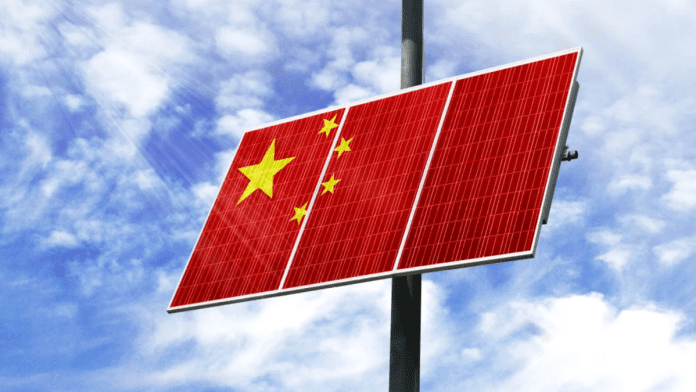🕒 Last updated on July 21, 2025
While the United States is stepping back from green energy, China is moving full speed ahead. This year, the Chinese government is adding 500 gigawatts (GW) of renewable energy capacity to its electricity grid, setting a new record.
China Powers Ahead with Record Clean Energy Investments
That’s enough to power hundreds of millions of homes.
At the same time, the U.S. is cutting support for renewable energy. Under President Trump’s administration, federal policies are cancelling tax credits for solar and wind power. These energy sources are being called “unreliable,” even though they were once celebrated across party lines in the U.S. just a few years ago.
Trump has openly criticized wind farms and solar fields. He claims they are ugly, inefficient, and even dangerous for the power grid. However, data from the U.S. government shows that solar was the fastest-growing energy source in America last year.
China sees things differently. Instead of fighting against the shift to clean energy, it is planning and building to make it work. Chinese energy experts argue that the problem isn’t with wind or solar power itself—it’s with how electricity grids are managed. They say that momentary ups and downs in energy supply can be handled with better systems. That means smart planning and advanced control systems, not cutting off support.
⚡ China Shocks the World with 260m Blade Giant—Biggest Wind Turbine Ever Built
AI Boom Driving Up Global Power Demand
All around the world, countries are building data centres to power artificial intelligence (AI) and other new technologies. These facilities run 24/7 and need huge amounts of electricity. China and the United States are both racing to build the next generation of data-driven technology.
But here’s the difference: China is making sure that these data centres are supported by clean energy. For example, Tencent, a major Chinese tech company, launched a smart microgrid at its Tianjin data centre. Solar panels were installed on the building’s roof, helping to generate green electricity right on site. Even though the solar power doesn’t meet all of the centre’s energy needs, it shows a serious effort to cut pollution.
This system is backed by AI and machine learning, which manage when to store, convert, or pull energy from the main grid. It’s a complex setup, but it helps the company get closer to its carbon neutrality goals.
In the U.S., however, the focus is shifting away from renewables. To meet the energy demand of tech expansion, the Trump administration is investing in fossil fuels like coal and natural gas. These sources are known for causing more pollution and harming the environment.
Just last week, major energy and tech companies announced large new investments in Pennsylvania. Yet, none of that money is going toward renewable power. Instead, funds are flowing into older, dirtier sources of energy.
This contrast shows how the two global powers are choosing different paths. While Beijing is using clean energy to power its future tech, Washington is turning to fuels from the past.
Green Energy Now a Big Part of China’s Economy
China still depends on coal and oil for much of its electricity. But clean energy is now playing a much bigger role. In 2024, around 35% of China’s electricity came from renewable sources like wind, solar, and hydropower.
Clean energy has also become a key driver of China’s economy. It now makes up about 10% of the country’s total economic output, with solar energy being one of the biggest contributors.
💰 China’s silent strike—pulls $10 billion from US debt as rare earth battle heats up
Chinese tech giants are also joining the clean energy movement. One major internet company says that 64% of the electricity used in its self-built data centres now comes from clean sources. This includes not just solar and wind but also nuclear energy, which does not release harmful gases.
However, the green journey is not without its bumps. Some areas in western China, which have rich solar and wind resources, still lack the infrastructure needed to bring that energy to the cities. Policy hurdles also slow things down. Even so, the direction is clear: China is investing heavily in clean power, and it’s changing the way its economy works.
Meanwhile, the U.S. is struggling with energy grid issues and has not made enough progress on integrating renewable energy. While clean power could be a solution to energy needs and climate challenges, U.S. policies are leaning toward traditional sources.
China is also building stronger energy networks. New transmission lines and better planning are helping connect far-off renewable projects to the national grid. This helps ensure that even remote solar farms can send power to where it’s needed.
By planning for the long term and investing at a national level, China is making clean energy work—even when there are challenges. The U.S., on the other hand, is letting go of policies that once helped solar and wind grow quickly.

